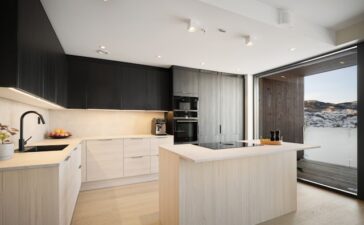Every artist knows that the right tools can make all the difference. When it comes to drawing, painting, or even crafting digital designs, having proper lighting is crucial for achieving stunning results. But what if there was a tool that could elevate your artistic process from mere sketches to breathtaking masterpieces? Enter the light box—a game-changer in the world of art. Whether you’re tracing intricate designs or simply needing better visibility for your work, a light box can transform how you create. Let’s delve into this incredible device and discover how it can enhance your artistry step by step.

The Importance of Proper Lighting in Art
Proper lighting plays a pivotal role in the artistic process. It influences how colours appear and affects an artist’s perception of their work. Without adequate light, details can easily be lost. Artists often struggle with shadows that distort shapes or diminish vibrancy. This can lead to frustration and hinder creativity. Bright, even lighting helps ensure that every stroke is visible and true to its intended hue. Moreover, good lighting enhances depth and contrast. Artists can see how different elements interact within their piece, allowing for better decision-making during creation.
Natural daylight is ideal but not always available. That’s where artificial solutions come into play. A well-lit workspace eases eye strain too, enabling longer hours of focused artistry without fatigue creeping in. With proper illumination, artists unlock new levels of precision and inspiration in their craft.
What is a Light Box and How Does it Work?
Many light boxes are simple yet powerful tools for artists. It consists of a translucent surface illuminated from beneath, allowing you to see through multiple layers of paper or images. Using a light box is straightforward. You place your drawing or image on top and turn it on. The internal lights shine through, illuminating the content below while casting even lighting across the surface.
This setup helps in tracing designs or refining sketches with precision. Artists can easily replicate intricate details without losing their original flair. Light boxes come in various sizes and styles, catering to different artistic needs. Whether you’re working on fine art, illustrations, or graphic design projects, this tool can elevate your creative process significantly.
Benefits of Using a Light Box for Artists
Using a light box can dramatically enhance an artist’s workflow. It provides consistent illumination, allowing for precise line work and detail enhancement. The even lighting minimises shadows, ensuring that every stroke stands out. Artists can easily trace designs or manipulate existing artwork. This process helps in refining skills and experimenting with new techniques without the pressure of starting from scratch.
The portability of many light boxes makes them convenient for on-the-go creativity. Whether you’re at home or sketching outdoors, having that focused light source is invaluable. Moreover, adjustable brightness settings cater to different mediums and preferences. Artists can customise their experience based on what they are working on, which leads to more satisfying results.
Using a light box encourages experimentation by providing a low-risk environment for trying out new ideas without commitment. It’s like having an artistic safety net right at your fingertips.
Types of Light Boxes and How to Choose the Right One
When selecting a light box, consider the size first. Larger models accommodate bigger artworks, while compact versions are perfect for smaller projects or travel. Next, think about brightness and colour temperature. Adjustable brightness levels allow you to customise your lighting based on your needs. A daylight-balanced option can help maintain true colours in your artwork. Portability is another factor. If you plan to create on the go, lightweight and battery-operated options are ideal. For those working at home, a more robust design with sturdy materials might be preferable.

Evaluate additional features like transparency settings or built-in grids that aid in precise alignment of images during tracing or sketching sessions. Each artist’s process is unique; finding the right light box will enhance your creativity and workflow significantly. The journey from sketch to masterpiece can be both exhilarating and challenging for artists. Utilising a light box can significantly enhance this process, providing clarity and precision. Proper lighting is essential in art; it highlights details and allows for better colour matching. Understanding how a light box works opens up new avenues for creativity. Its benefits are numerous, including improved accuracy in tracing or overlaying designs, making it easier to execute intricate details that might otherwise go unnoticed.
Choosing the right type of light box tailored to your needs is crucial as well. With various options available, you can find one that fits your artistic style and preferences perfectly. Embracing tools like light boxes not only streamlines the creative process but also elevates the quality of artistic work. Whether you’re a beginner or an experienced artist, integrating this tool into your practice could transform how you create forever.





